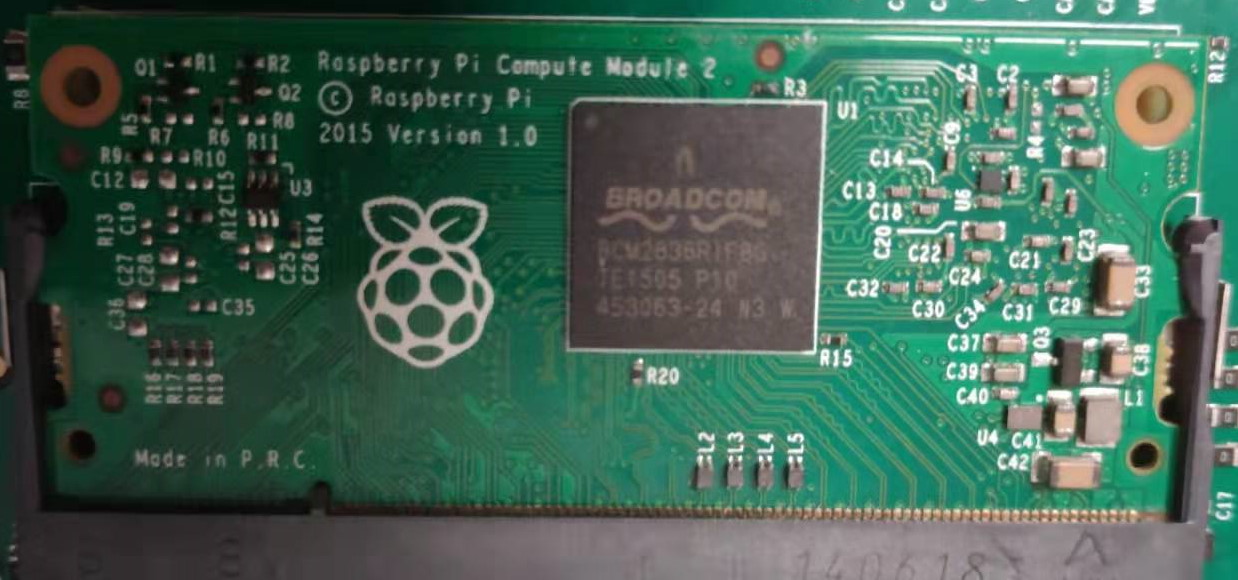Raspberry Pi Compute Module 2
Table of contents
Raspberry Pi Compute Module 2
While searching for some information about the Revolution Pi series, I stumpled upon a two days old commit at the official Raspberry Pi Linux repository.1
After I’ve seen the file bcm2709-rpi-cm2.dts I thought something like “Oh, that must be an older, never released Compute Module from the pre-CM3-era.”, but why was the file added two days ago?!
That’s no older model, that something “new”, kinda.
The Hardware
What’s on the CM2? What hardware is used?
The commit shows the description “Compute Module 2 is a CM3 with a 2836. The DTS file reflects that.”, so it’s basically a Raspberry Pi 2 B with SO-DIMM-connector.
The RPi2B was released in 2015, and this means a BCM2836 (Cortex-A7) with 4x 900 MHz and 1 GB of RAM.
Since the SoC is an ARMv7, we only will get 32-bit support, which is kinda weird for 2022.
I opened a thread in the official Raspberry Pi forum2, where I hope somebody will enlight me, why there is need for such a module.
The step from CM3(+) to the new CM4S is understandable. More power and better availability, as I wrote in my last article, are pretty solid points for the CM4S.
The old SoC is also 40 nm, like the BCM2837, which is used on the CM3(+).
Why should it have a better availability? Do they have a million chips somewhere lying around and thought “Hey, let’s put them to good use!”?
If anybody has a good idea, please drop me a line.
Availability
The CM2 wasn’t officially announced, yet. I don’t have any news or insights about this topic.
With the CM4S in mind, my hopes are not the best. Is it another model (time-)exclusive for the industrial market? Are there BCM2836 around, to solder them onto the Compute Modules?
I guess, we have to wait some time.
Overclocking (forecast)
Without new Raspberry Pis and a bad availability of the existing ones to start some old fashioned overclock and benchmark sessions, this blog feels like a news-site. Weird…
But let’s get to the core of this website. What can we expect in terms of overclockability?
In the past, I didn’t get much time to tinker around with the RPi2B. AFAIK I only own one or two BCM2836-based RPi2Bs, which didn’t clock that well.
But I tested them (or it) only under air-cooling. So there is potential for the SoC. Unlike the BCM2837 which default clocks are 1,200 MHz (BCM2837A1) respectively 1,400 MHz (BCM2837B0), the BCM2836 clocks at only 900 MHz.
The software limit should be at 1,600 MHz, so we will need some kind of cooling with sub-ambient temperatures.
If I can get my hands on some RPi2B, I guess it’s time to test this SoC, until the CM2 is available.
Update: 09.06.2022
Just a small update for my HWBOT Prime Benchmark script.3
Now with support for the CM2 and the boards by KUNBUS, which use modified firmwares.
Beside this I also added some revision codes for CM4S, which are mentioned in the datasheet.4 I don’t know, if they will be available some day, but my script should identify them from now on.
Update: 14.06.2022
While reading Jeff Geerling’s new post5 about the new Compute Module 3E (Yeah, I know….another module), he linked to a thread6 from 2019, where a user posted a picture of a Compute Module 2.
The module is dated 2015 and “Made in China”. Since there is no official support, the device tree is missing and it’s not usable. Maybe with coming firmware-updates these old prototypes are now working properly.

The moderators confirmed, that there was a CM2 designed, but never released. This CM2 seems to be stolen from a Chinese OEM-manufacturer.